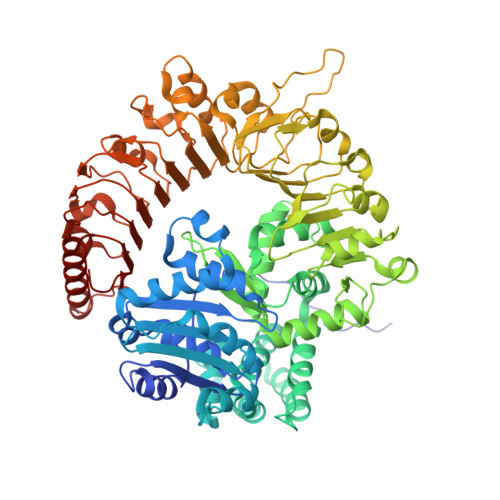Oligomerization-mediated autoinhibition and cofactor binding of a plant NLR.
Ma, S., An, C., Lawson, A.W., Cao, Y., Sun, Y., Tan, E.Y.J., Pan, J., Jirschitzka, J., Kummel, F., Mukhi, N., Han, Z., Feng, S., Wu, B., Schulze-Lefert, P., Chai, J.(2024) Nature 632: 869-876
- PubMed: 38866053
- DOI: https://doi.org/10.1038/s41586-024-07668-7
- Primary Citation of Related Structures:
8XUO, 8XUQ, 8XUV - PubMed Abstract:
Nucleotide-binding leucine-rich repeat (NLR) proteins have a pivotal role in plant immunity by recognizing pathogen effectors 1,2 . Maintaining a balanced immune response is crucial, as excessive NLR expression can lead to unintended autoimmunity 3,4 . Unlike most NLRs, plant NLR required for cell death 2 (NRC2) belongs to a small NLR group characterized by constitutively high expression without self-activation 5 . The mechanisms underlying NRC2 autoinhibition and activation are not yet understood. Here we show that Solanum lycopersicum (tomato) NRC2 (SlNRC2) forms dimers and tetramers, and higher-order oligomers at elevated concentrations. Cryo-electron microscopy (cryo-EM) reveals an inactive conformation of SlNRC2 within these oligomers. Dimerization and oligomerization not only stabilize the inactive state but also sequester SlNRC2 from assembling into an active form. Mutations at the dimeric or inter-dimeric interfaces enhance pathogen-induced cell death and immunity in Nicotiana (N.) benthamiana. The cryo-EM structures unexpectedly reveal inositol hexakisphosphate (IP 6 ) or pentakisphosphate (IP 5 ) bound to the inner surface of SlNRC2's C-terminal LRR domain as confirmed by mass spectrometry. Mutations at the IP-binding site impair inositol phosphate binding of SlNRC2 and pathogen-induced SlNRC2-mediated cell death in N. benthamiana. Together, our study unveils a novel negative regulatory mechanism of NLR activation and suggests inositol phosphates as cofactors of NRCs.
- Xianghu Laboratory, Hangzhou, Zhejiang, China. mashoucai@xhlab.ac.cn.
Organizational Affiliation:


















